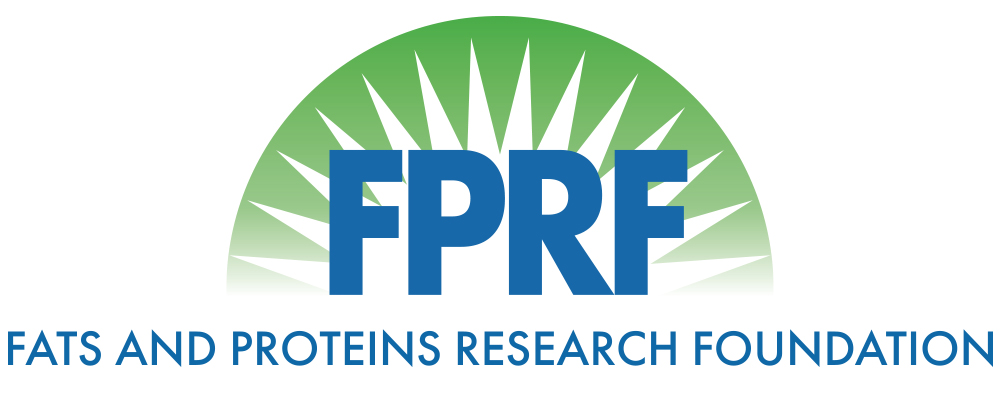Evaluation of techniques used to extend shelf-life and methods for analysis of rendered protein meals in pet foods
Title: Evaluation of Techniques Used to Extend Shelf-life and Methods for Analysis of Rendered Protein Meals in Pet Foods
Principal Investigator: Greg Aldrich, Kansas State University
Keywords: 2012, Aldrich, oxidation, pett food, rancidity, oxidation, protein meals, PV, meat and bone meal, poultry by-product meal
Year: 2012
Objective: To determine the efficacy of rapid methods (e.g. SafTest) relative to conventional methods for measures of oxidation in rendered protein meal
Lay Summary/Industry Summary: Rendered protein meals represent a significant contribution of the quality proteins used to produce modern pet foods. These protein meals carry with them a modest quantity of fat (15 to 20%), which can oxidize readily if not properly preserved. The fastest growth areas in pet food are naturally preserved diets. Keeping these foods shelf-stable is a recurring challenge because natural preservation is more expensive, less effective, and prone to cross-contamination with synthetic preservatives in the supply stream. Synthetic preservatives have proven very effective; but the pet food manufacturing companies are pressured to use the less effective, yet more costly natural-mixed tocopherols. There exist questions regarding the true efficacy of some forms of the natural antioxidant preservatives, whether topical application of the mixtures is effective, and if the methods used to detect the application or the resulting stability are accurate..
There were differences observed between results among the three PV methods, which confirm the inconsistencies reported between quality control laboratories in the industry. Thus, there is a need for additional evaluation of the methods used to determine oxidative stability of rendered protein meals. Some of these method difference deserve further evaluation; especially, measures of the secondary oxidation products. Particle size, particles per gram, and surface area of protein meals varied substantially among rendering plants. This variability may explain some of the inconsistent results observed for naturally preserved protein meals used in pet foods. This latter area merits additional work under a more specifically designed evaluation.
Scientific Abstract: Increasing pressure has been put on ingredient suppliers to assure a low level of oxidation, as measured by a low peroxide value. Our objective was to determine the effect of increasingly oxidized protein meals on the shelf life of extruded pet foods. Approximately one metric ton each of unpreserved chicken by-product meal (C) and unpreserved beef meat and bone meal (B) were collected and left unpreserved (U) or preserved with either ethoxyquin (E), or mixed tocopherols (T). These were allowed to oxidize at ambient conditions (25°C and 51% RH) while being monitored for peroxide value (PV) and anisidine value (AV) until they plateaued (41 and 63 d, respectively) at a PV of 88.44, 4.43, 2.22 mEq/kg and AV of 1.08, 0.55, 0.00 g/g for CU, CT, CE, respectively and at a PV of 86.42, 8.88, 2.23 mEq/kg and AV of 12.23, 7.14, 0.00 g/g for BU, BT, BE, respectively. Each meal was then incorporated into a model extruded cat food diet (~30% protein). Samples of kibble for each treatment were collected and stored at an elevated temperature and humidity (40°C and 70%) for 18 weeks. At time 0, PV and AV were greater for CU and BU (P < 0.05; 14.41, 10.07 mEq/kg and 15.56, 10.08 g/g, respectively) versus the preserved treatments CT, CE, BT, and BE (2.78, 2.22, 2.22, 2.22 mEq/kg and 3.85, 1.79, 9.62, 3.03 g/g, respectively). At elevated storage temperatures, the PV for CE remained low (4.44 mEq/kg), CT was intermediate (23.21 mEq/kg) and CU increased to 53.15 mEq/kg by 18 weeks (P < 0.05). The AV for C followed a similar pattern. The PV of B under elevated temperatures behaved differently; wherein, BE was low (3.33 mEq/kg), but BT had the highest PV (15.48 mEq/kg) and BU was intermediate (6.66 mEq/kg) by 18 weeks (P < 0.05). BE had the lowest (P < 0.05) AV and BT and BU were greater, but did not differ from each other (average 16.75 g/g) at 18 weeks. The results from this study demonstrate that oxidation occurred regardless of treatment; but, was rapid and extensive in meals without preservative. The ingredient oxidation levels were diluted by food production and their oxidation may not completely account for later food product deterioration.
Publications:
Gray, M.N., Aldrich, C.G., Jones, C.K., and M.W. Gibson. 2015. The impact of rendered protein meal level of oxidation on shelf life and acceptability in extruded pet foods. Poster. ASAS/ADSA Annual Meeting, Orlando, FL. http://m.jtmtg.org/abs/t/65262
